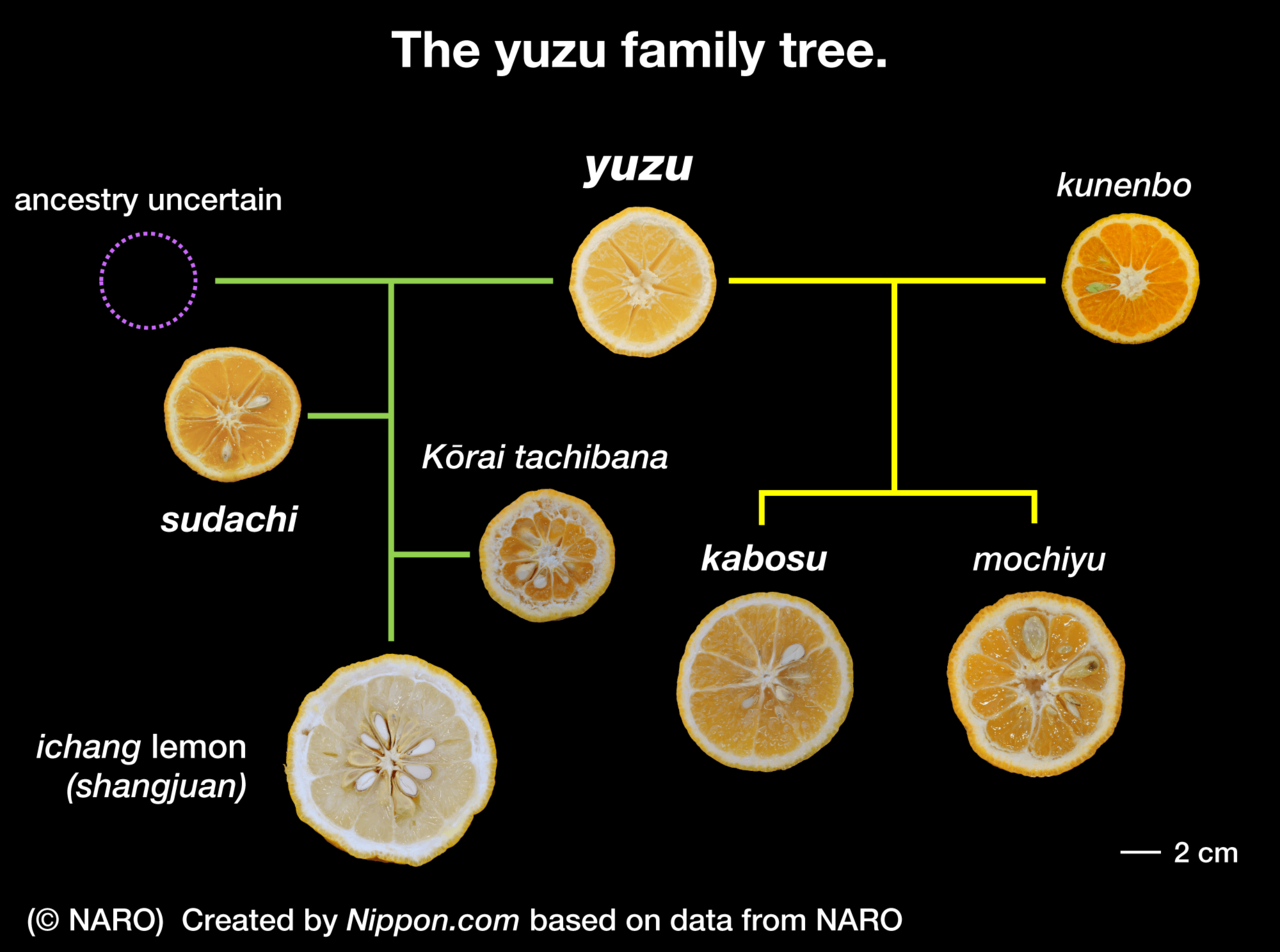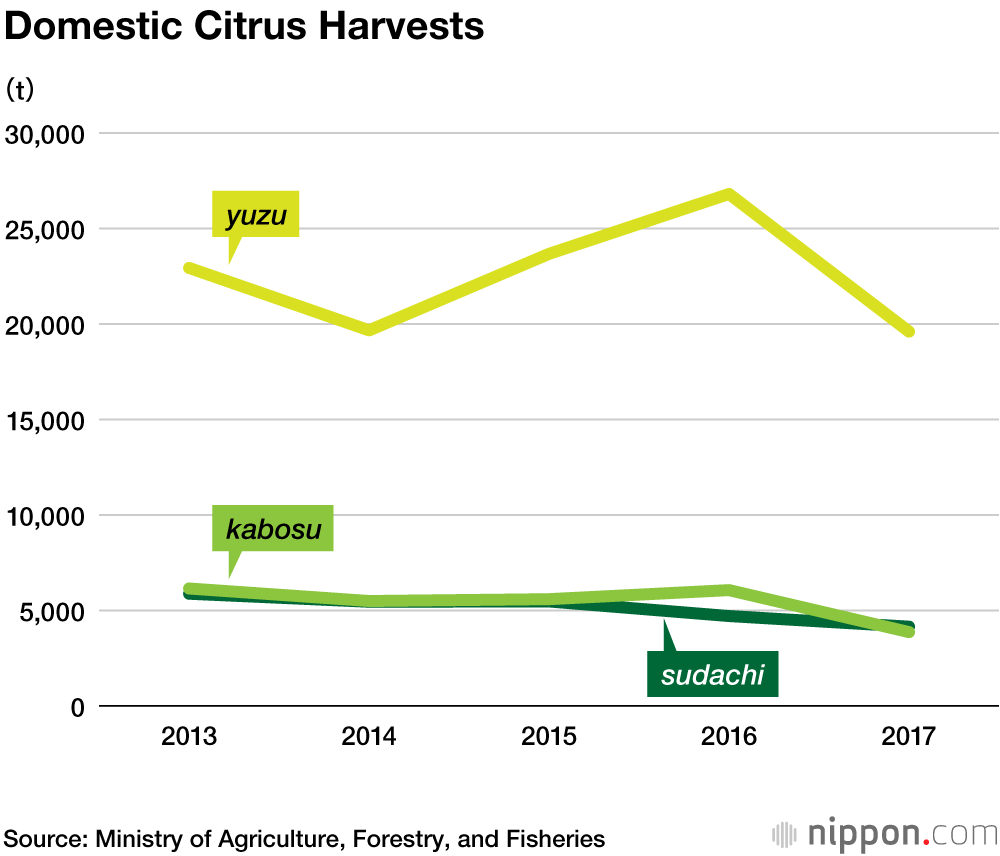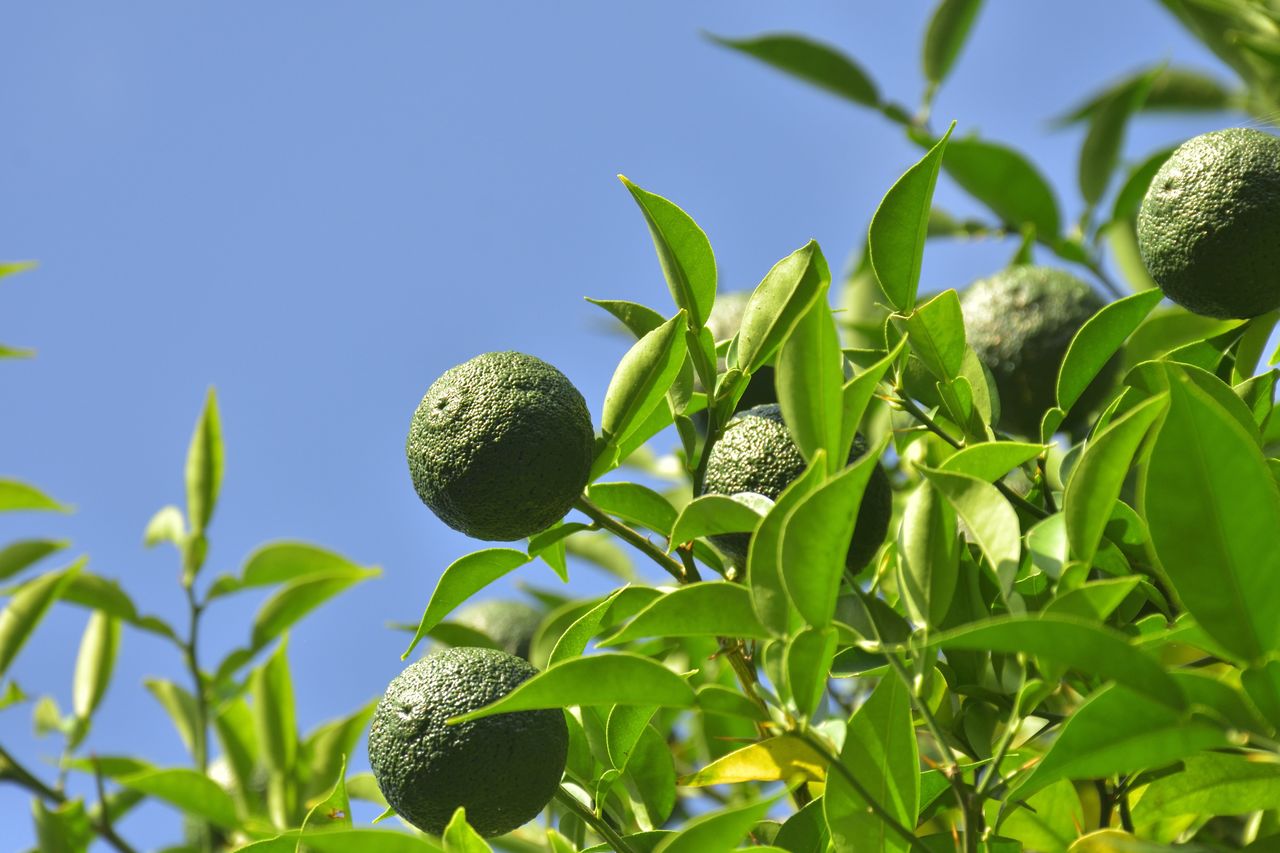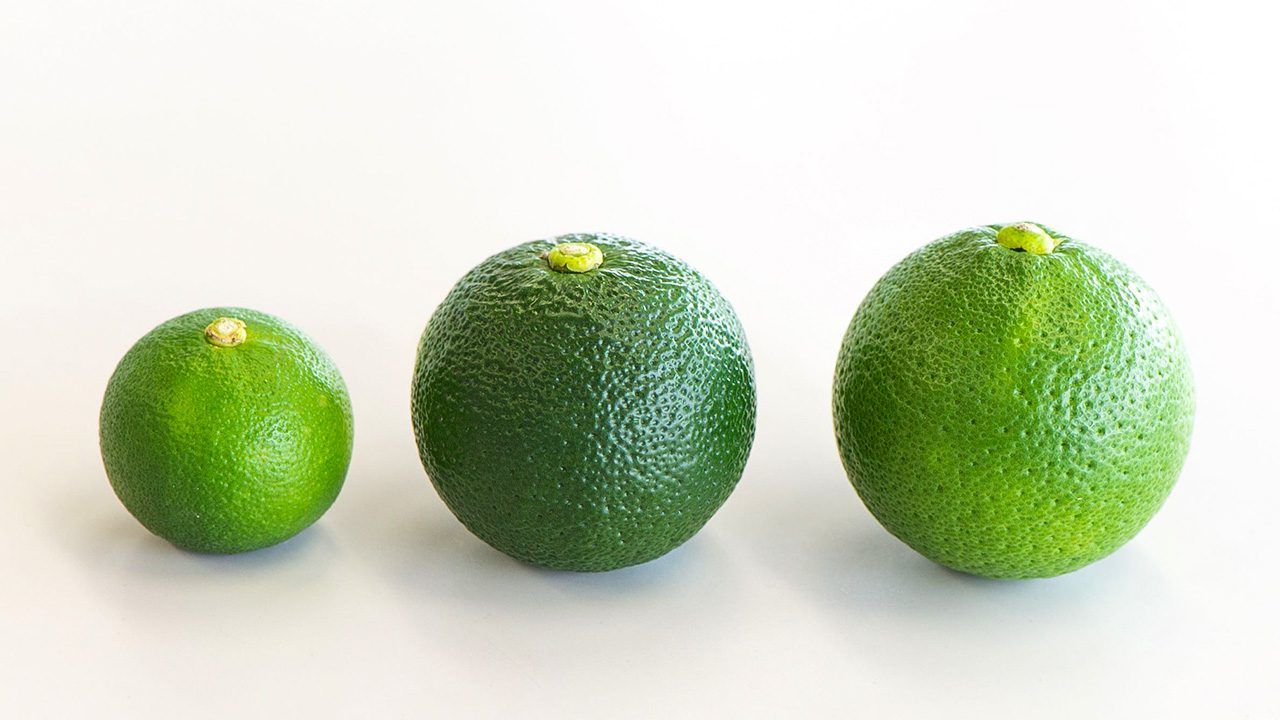
Japanese Fruit: In Pursuit of Sweet Perfection
Japan’s Sour Citruses Add Zip to Cuisine
Food and Drink Science Culture- English
- 日本語
- 简体字
- 繁體字
- Français
- Español
- العربية
- Русский
Bringing Out the Flavor
Kōsan kankitsu ripen as the weather cools into winter, shifting from a deep green to yellow or orange, and they begin appearing on store shelves in the early autumn. Historically, the acidity led to them being called sumikan (vinegar oranges), but now the general name is kōsan kankitsu. According to some references, there are now over 40 varieties of sour citrus used in Japan. The flesh of these fruits, like yuzu, sudachi, and kabosu, is far too acidic to be eaten as-is. Rather, the aromatic peels and sour juices are used to accentuate other foods, much like lemons or limes in the West, and have become part of traditional Japanese cuisine in this role.
Yuzu, the king of the sour citruses, brings boundless aroma to soups and broths. Fragrant sudachi is an essential addition to autumn’s signature matsutake mushrooms, while sour kabosu is a constant companion to blowfish. You can even make a fantastic dressing by squeezing kōsan kankitsu into some olive oil, then adding a dash of salt and pepper. The acidity of these citruses is a key to bringing out the deeper flavors of a dish and encouraging the appetite.

Okhotsk mackerel with sudachi (left) and blowfish sashimi with soy sauce and kabosu. (© Pixta)

At a farm direct shop. Clockwise from bottom left: lime, sudachi, kizu. (© Nippon.com)
These fruits are all key supporting players, as a few drops of juice, or a sliver of peel, can completely alter the flavors of a dish. According to Dr. Yoshida Munehiro of Kansai University, their juice has long been used in place of vinegar, and in landlocked areas where fresh fish was unavailable, it served as a preservative to prevent food poisoning from perishable animal meats, as well as to improve their taste. These fruits are also quite nutritious. The refreshing flavor is a result of high levels of citric and malic acids, as well as amino acids, and they are full of vitamin C. The peels contain essential oils like limonene and a variety of other aromatic components that give each variety its own unique aroma.
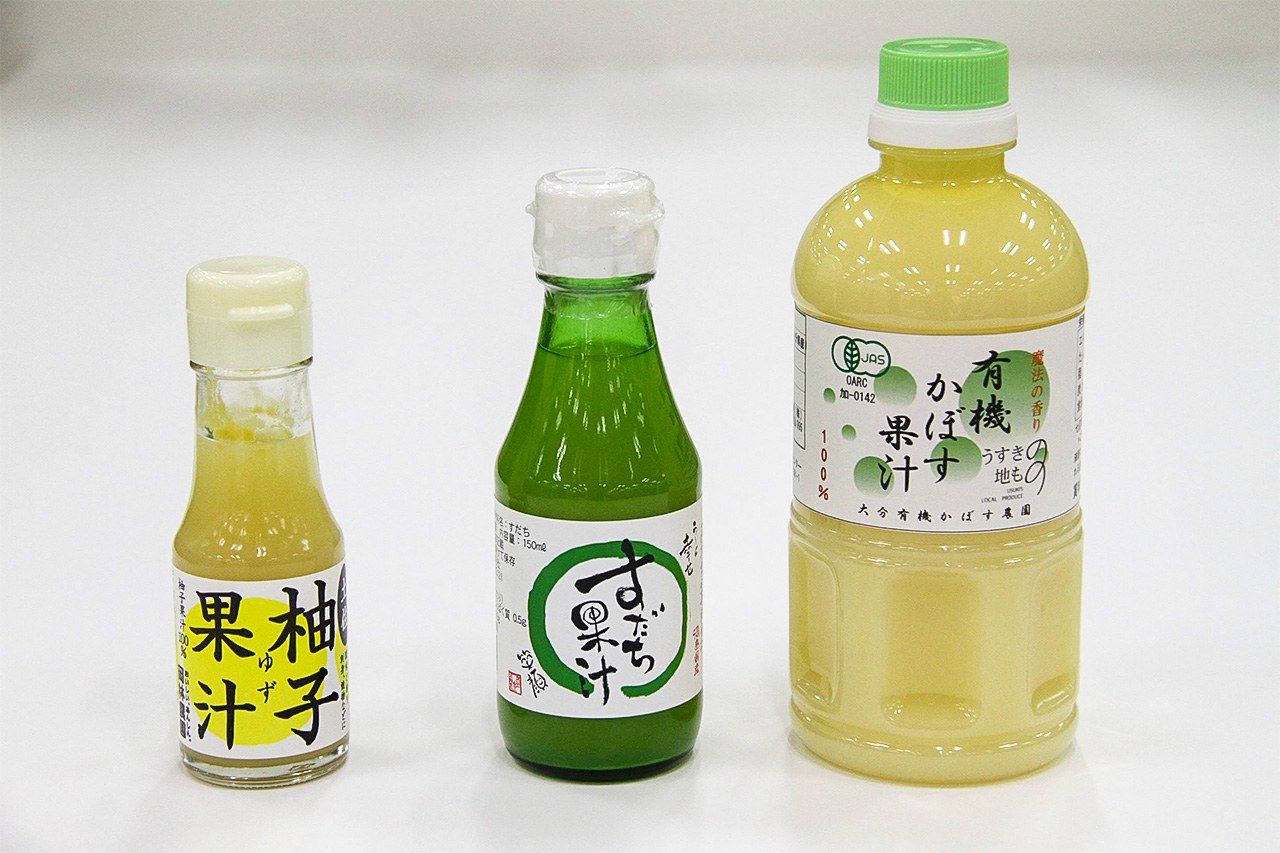
In Kōchi Prefecture, sushi is made with yuzu vinegar rather than the usual rice vinegar, while in Tokushima sudachi vinegar is the standard choice. From left: yuzu juice, sudachi juice, kabosu juice. (© Nippon.com)
Punchy Ponzu
Chef Asami Kenji, owner of the traditional cuisine restaurant Ginza Asami in Tokyo’s Tsukiji district, says: “Kabosu keeps year round, and I use it with sashimi, grilled fish, and matsutake dishes. I make yuanji, slices of yuzu preserved in sake, mirin, and soy sauce, to flavor grilled dishes, and I put yuzu peel in soups and chawan-mushi savory custards. I also mix kabosu into the soy sauce to serve with blowfish sashimi. Daidai is quite subtle, so I usually mix it with soy sauce.”
This characteristic affinity with soy sauce is what makes Japan’s kōsan kankitsu perfect for use in ponzu. Each region has developed its own version of the ponzu mix, which pairs sour citrus juices with flavorings like soy sauce and dashi stock. The name ponzu actually comes from an old Dutch word, pons, which comes from the same root as English “punch.” It came to Japan as the name for a Dutch drink made from citrus juice, sugar, spices, and liquor. The first record of the word ponsu in Japanese comes from 1884, when it was used for any citrus juice. Now, this nearly ubiquitous seasoning is used with all kinds of dishes, like mizutaki (chicken on the bone stewed with vegetables) or shabu shabu hotpots, sashimi, tōfu dishes, grilled fish, steamed dishes. It is also an excellent dressing for salads.
The regional variations are often quite indicative of local food culture. In Kyoto, a city known for refined, elegant dishes, cooks use subtle daidai (bitter orange) ponzu with kaiseki cuisine. In Osaka, known for much more boisterous flavors, bold sudachi ponzu is preferred.
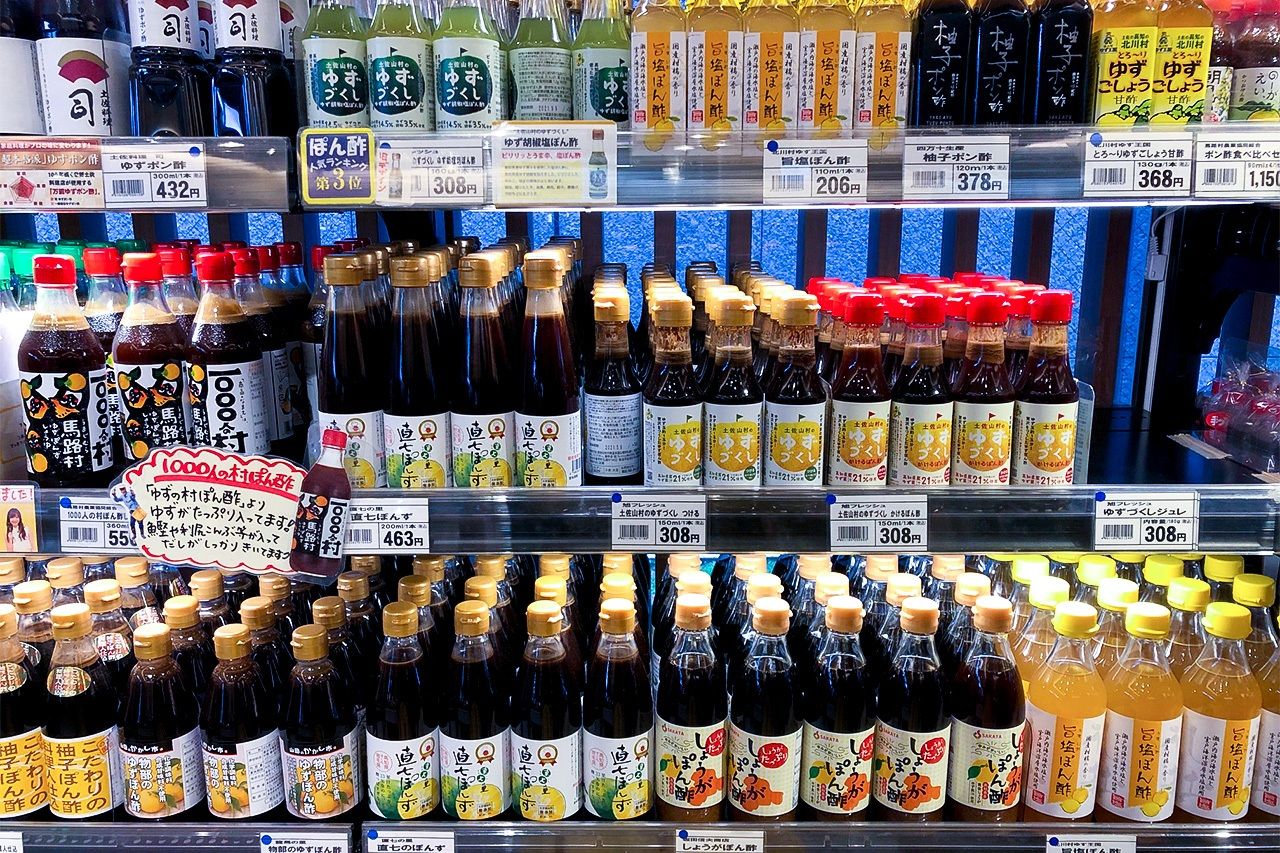
Shop shelves with a varieties of ponzu: yuzu, naoshichi, ginger, and salt. (© Nippon.com)
Family Tree
The National Agricultural and Food Research Organization (NARO) performed genetic surveys to find the original parentage of 67 Japanese sour citrus fruits just two years ago. According to senior researcher Shimizu Tokurō, the central citrus variety is the Kishū mikan. The most commonly grown mikan, the Unshū mikan, or Satsuma mandarin, is a result of a cross between the Kishū mikan and kunenbo.
A parent citrus of the Unshū mikan was crossed with kunenbo and yuzu, resulting in kabosu. The sudachi resulted from a cross between yuzu and an unknown partner. In other words, both kabosu and sudachi are descendants of the yuzu, and relatives of the Unshū mikan. And yet, each of them has markedly different aromas, flavors, and textures.
Overwhelming Yuzu Production
Honjō Hiroshi, kōsan kankitsu dealer for Japan’s largest fruit dealer, Tokyo Seika, explains that less than 30% of sour citrus are sold whole, due to the sharp thorns on their trees and the difficulty of storing them without damage to their peels. Around 80% of all the harvested fruit is processed into juice or desserts. Among all of these sour citruses, yuzu is by far the most common, with harvests over four times the size of those of sudachi and kabosu. As seen in the graph below, annual citrus yields fluctuate based on a repeating cycle of good and bad harvests.
Yuzu from Kōchi, sudachi from Tokushima, kabosu from Ōita, and shīkuwāsā from Okinawa Prefectures have all been successfully adapted into local specialties, with their juice, peel, flesh, and even seeds being used in sweets, liquors, sauces, and processed foods as well as makeup and spices. As local farmers age and rural regions suffer from population decline, this specialization offers added support for local revitalization.
Yuzu, Sudachi, and Kabosu: What’s the Difference?.
Although they can seem similar, these three differ in size, smell, and flavor. Below, we go through some of their characteristics to help tell them apart.
Yuzu (Citrus junos)
Yuzu, the king of sour citruses, is an essential element of Japanese cuisine. It is tolerant to cold and relatively friendly to organic farming. While yellow yuzu, which tends to go on the market around November, is most famous, early-harvest green yuzu goes on sale from mid-August through October. Its peel is the most important part.
The size falls between kabosu and sudachi. One of the identifying characteristics is the rough outer peel. Some 80% of the domestic market is grown in Kōchi, Tokushima, and Aichi Prefectures. They are also commonly found in private gardens, and when they ripen they turn from dark green to yellow.
They were first mentioned in Shoku Nihongi, a record written in 771. There are records that citrus and salt were commonly served with sake at the nobility’s drinking parties, implying that yuzu was a prized flavor even then. They are also a common exotic fruit in the west, featuring different flavors and aromas from those of limes and lemons.
Ripened yellow yuzu is quite acidic, so it is commonly used as an aromatic botanical. The dried peel is also used in the traditional hot pepper spice mix called shichimi tōgarashi. In Japan, people often take baths with yuzu in hopes for good winter health. Recently, they are even used abroad in desserts like sherbets and macarons, as well as in teas and bath salts. The aromatic oils from the peel are used in colognes and perfumes, too.
Sudachi (Citrus sudachi)
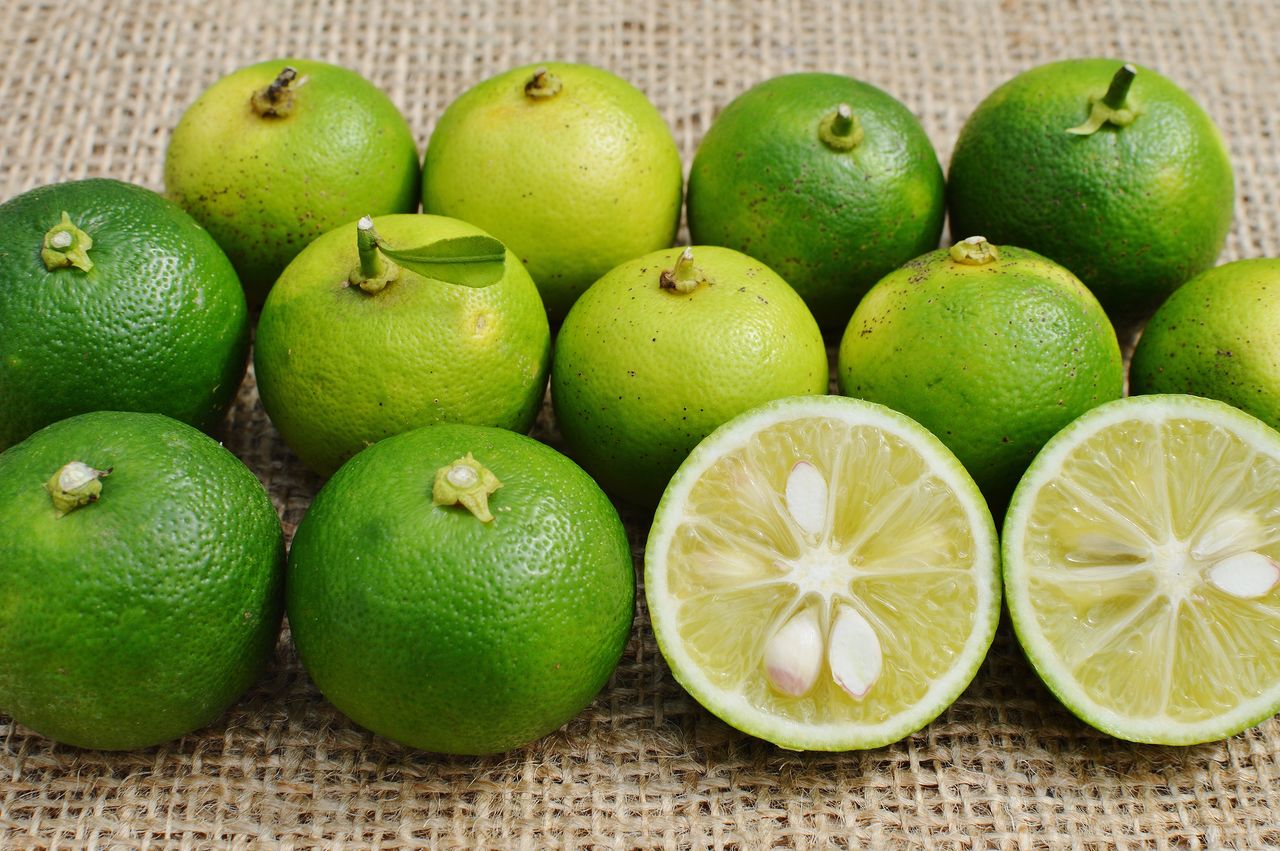
Sudachi feature plenty of seeds for their small size. (© Pixta)
These are particularly known for their aroma. The name sudachi derives from an old Japanese name sutachibana, from the words su (vinegar) and a traditional name for another citrus fruit, tachibana. Tokushima Prefecture accounts for over 90% of domestic production. They are about the size of a table tennis ball, making them the smallest of these three citruses.
As noted above, science has shown that one ancestor of this fruit is the yuzu. The first recorded mention is in 1709, in the Yamato honzō record written by the philosopher Kaibara Ekken, under the name riman. They are in season from mid-August into October, roughly the same as Japan’s autumn seasonal dishes like matsutake mushrooms and mackerel pike, noted for their own rich fragrances that match perfectly with sudachi. The fresh aroma and gentle sourness of this fruit are also a good match for alcoholic drinks like shōchū with soda. They are also used to add aroma to noodles like soba, sōmen, and udon.
Kabosu (Citrus sphaerocarpa)
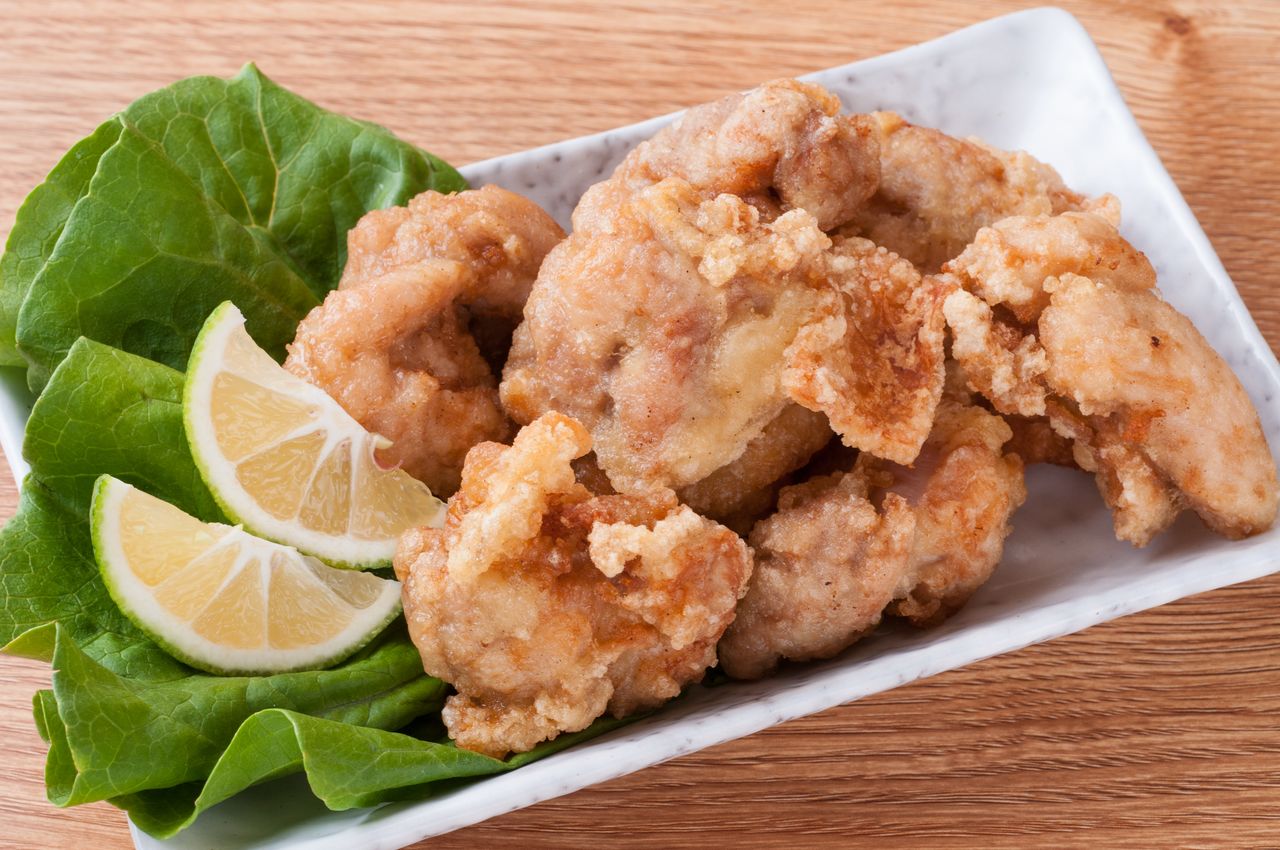
Kabosu served with karaage fried chicken. (© Pixta)
Kabosu are about the size of a tennis ball, making them larger than both yuzu and sudachi. They are a specialty of Ōita Prefecture, and have smooth, light green peels and flesh with an orange tinge to it. They are in season in September and October.
Stories say that they have been grown in Ōita for around 300 years, ever since a local doctor went to study in China during the Edo period (1603–1867) and brought back some seedlings as a gift from a monk there. They are excellent at enhancing, rather than masking, the clean flavors of Ōita’s blowfish or other white-fleshed fish dishes. The produce plenty of juice, making them well-suited for use in pickling, as part of ponzu for hotpots, and for making drinks. They are more acidic even than yuzu or sudachi, and have become an essential part of blowfish cuisine around western Japan.
Untapped Potential
The gentle sourness of these fruits make a perfect addition to traditional kaiseki cuisine, and sashimi as well. However, it seems that their use in international cuisine remains mostly unexplored, due in no small part to restrictions on imports of the fruit in place until relatively recently. With all of the untapped potential for use in international cuisine that that Japan’s kōsan kankitsu still hold, the time seems right for people to reassess their potential in other dishes, as well.
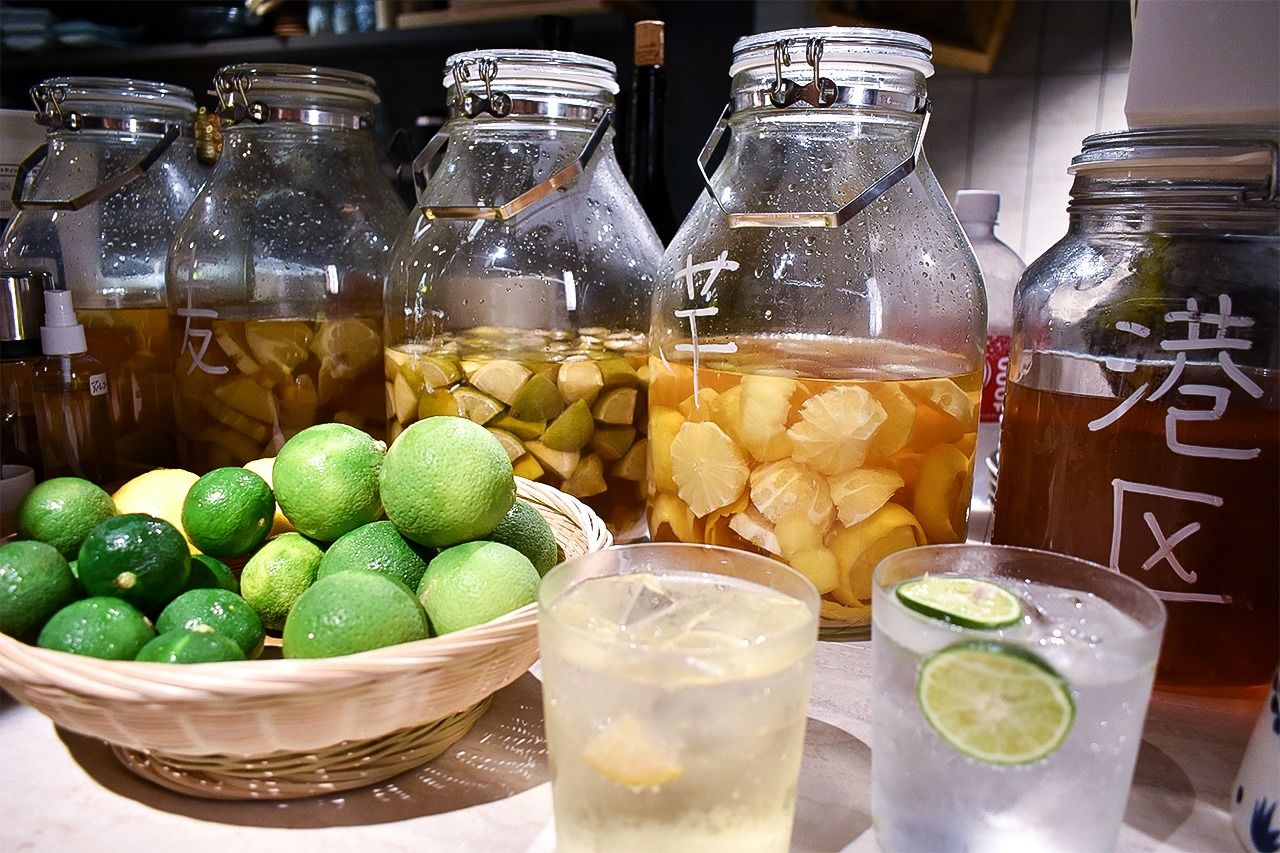
Refreshing drinks with sudachi and kabosu steeped in liquor: a sudachi sour (center) and a kabosu sour (right). With cooperation from Tsukanto Toranomon Hills. (© Nippon.com)
(Originally published in Japanese. Banner photo: from left, sudachi, yuzu, and kabosu. © Kodera Kei.)
